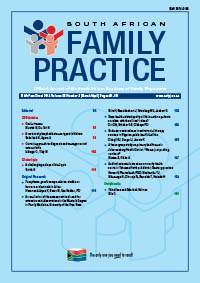Ocular trauma
Keywords:
ocular trauma, injury to the eye, traumatic vascular events, open globe injury
Abstract
Ocular trauma is an important cause of unilateral blindness and visual impairment across the world. Most injuries are accidental, work-related injuries in developed countries, while assaults predominate as a cause in developing countries. Trauma may result in various forms of ocular injuries, ranging from minor insult to major functional impairment. Any ocular structure may be involved, and a careful, systematic approach to the examination of a patient is essential to avoid missing occult injury and resultant visual impairment. This paper highlights key points regarding the clinical evaluation of patients with ocular trauma and covers the presentation and primary care management of the more common ocular injuries.- Figure 1. Snellen chart, fluoroscein strip, local anaesthetic drops and pentorch
- Figure 2. Desmarre retractors and bent paper clip retracor
- Figure 3
- Figure 4. Lid laceration with underlying corneal laceration
- Figure 5. CT scan of orbits showing subperiosteal haematoma
- Figure 6. CT scan of orbits showing blow-out fracture of orbital floor
- Figure 7. CT scan of orbits showing orbital FB
- Figure 8. Conjunctival subtarsal FB
- Figure 9. Rust ring remaining after corneal FB removal
- Figure 10. Orbital X-ray showing intra-ocular FB
- Figure 11. Punctate keratopathy visible with fluoroscein staining
- Figure 12. Obvious lid and scleral lacerations
- Figure 13. Corneal laceration with iris prolapse
- Figure 14. Subconjunctival haemorrhage
- Figure 15. Anterior chamber filled with blood and obscuring all iris details
- Figure 17. Lens dislocated into anterior chamber
- Figure 18. Severe alkali injury in a deceptively uninflamed eye
- Figure 19. Irrigation of a chemical injury
- Title & Acknowledgements
Published
2013-09-19
Section
CPD
By submitting manuscripts to SAFP, authors of original articles are assigning copyright to the South African Academy of Family Physicians. Copyright of review articles are assigned to the Publisher, Medpharm Publications (Pty) Ltd, unless otherwise specified. Authors may use their own work after publication without written permission, provided they acknowledge the original source. Individuals and academic institutions may freely copy and distribute articles published in SAFP for educational and research purposes without obtaining permission.

